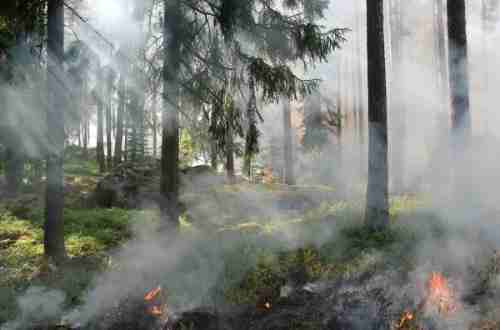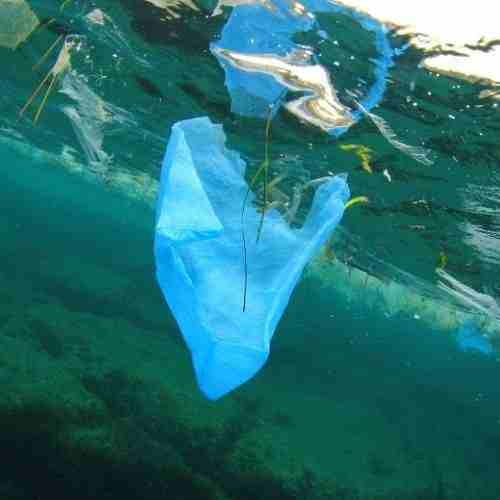Wildlife conservation seeks to prevent decreasing populations of both animals and plants by protecting their habitats and restricting destructive activities such as poaching. Wildlife conservation goals include decreasing the impact of climate change and protecting ecosystem services and biodiversity.
As the population has grown in the past few decades, so have deforestation, pollution, and other elements that have endangered the wildlife’s health worldwide. Over the past 20 years, more than 46,000 acres of land have been lost due to deforestation, along with an increase in pollution and warming temperatures. This article will discuss the methods used to combat wildlife conservation in these issues, how biodiversity is interconnected with conservation, and the significance of protecting habitats while reducing the effects of climate change.
Wildlife is a sustainable resource with surplus hunting; hunters can help keep wildlife populations to ensure an appropriate balance for the environment. The regulation of hunting has never resulted in endangered or threatened wildlife populations. Hunters play a crucial role in providing the information wildlife managers need.
What is Wildlife Conservation?
Wildlife conservation is the protection and protection of species of animals and plants and their natural habitats. This is crucial as it aids in maintaining natural ecosystems that are healthy and healthy, with healthy numbers of animals and plants.
Many things in the present pose a threat to wildlife. If they’re not taken care of, it could result in the extinction of certain species of animal or plant. This is a huge loss, not just for biodiversity but also for humans.
Wildlife conservation can be achieved using a variety of approaches. These include legislation, the conservation and the protection of public lands, and the creation of groups dedicated to the well-being of wildlife.
What Are The Goals Of Wildlife Conservation?

As we’ve been aware of the threats that reduce the ability of wildlife to survive, You may want to reconsider the activities that contribute to animal threat and other species’ extinction. It’s possible to change our habits slowly, but we can still be a positive change when we all do it. Here are some suggestions for how you can help save our planet’s wildlife.
Protecting Biodiversity
One of the primary objectives of wildlife conservation is to safeguard biodiversity. Biodiversity is the term used to describe the diversity of animals, plants, and living things that live on the planet. It is viewed in different ways, including the genetic diversity of species, diversity, and the larger diversity of ecosystems.
Biodiversity is vital as it can make ecosystems more resilient. Interactions between species within the example of the tropical rainforest ecosystem create healthy trees that will, in turn, draw carbon dioxide out of the atmosphere and help us humans who breathe oxygen.
The interconnectedness between species is complex, even in a simple ecosystem. While it could appear that the loss of a species isn’t an issue, the reality is that complex interactions between species are present. The negative effects of losing one species could cause harm to others (and eventually, us as human beings) in the process. The preservation of biodiversity is the primary goal of protecting ecosystems and the benefits they offer us.
Conserve and preserve their habitat
Wild animals depend on their environment. It’s in which they reside within their natural habitat, where they can protect themselves from predators to safeguard their species and reproduce, and also where they eat to ensure the sake of survival. Their habitat is the basis of their existence. Without it, survival for a long period is virtually impossible.
Do you remember the bushfires that started in Australia and the rainforest fires that raged in the Amazon region? The fires lasted for many several days. It was hell for animals who had lost habitat. The extinction of millions of animals was devastating. Out and many became extinct as the huge flames stopped those that escaped emerged in a pathetic state that could be heartbreaking. Wild animal fur was gone, their skins were burned, Koalas were thirsty and searching for food. If they cannot sustain themselves, it is easier to fall to extinction.
Reduction of Pollution
If you’re wondering, what exactly is the conservation of wildlife? Creating a secure habitat for plants and animals is certainly one of them.
There are many contaminants nowadays that have a major impact on animals’ health and habitats.
Human beings are to the major be blamed for this. Many pollutants result from our everyday activities that make their way into waterways and the air and then become pollutants. These include sewage, trash, industrial and agricultural chemicals, toxic emissions, and many more.
Plastic Pollution

Articles and news stories have been discussing the issue since. Plastics are floating in our oceans and could threaten the life of marine creatures. Seals, whales, dolphins, and many more are dying and becoming extinct because of this environmental threat. They contain harmful chemical compounds, and marine animals typically eat them due to their tiny dimensions. After ingestion, they endure for several months, or perhaps years, before dying. World Economic Forum sees that in 2050, there will be greater amounts of plastic in the world’s oceans.
Conservation And Carbon Dioxide
Here’s another one I learned at school to show the feedback loops I talked about in the previous post, but this time, I used whales instead of wolves. Whales can help mitigate the impacts of climate change because they are an integral part of our ocean’s ecosystem. When whales feed within the depths of the ocean, they come back to the shore to breathe. They also poop when they’re on the surface (and as you’ll see, they do poop quite a lot). This waste serves as fertilizer for phytoplankton organisms living on the surface that utilize sunlight and fertilizer as plants do to take carbon dioxide out of the atmosphere and then release oxygen.
The phytoplankton may be tiny, but their effect on carbon dioxide capture is enormous. Phytoplankton makes up a significant element of carbon cycles, and it has been calculated that they absorb four times the amount of carbon dioxide than in the Amazon Rainforest.